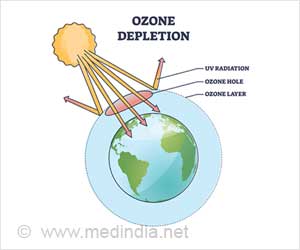Nearly 53.6 million metric tonnes (Mt) of electronic waste was generated globally in 2019, up 21 percent in just five years, reports the UN's Global E-waste Monitor 2020.

‘Electronic waste is the world's fastest-growing domestic waste stream. It is a health and environmental hazard, containing poisonous additives or hazardous substances like mercury, which damages the human brain and coordination system
’





Only 17.4 percent of 2019's e-waste was collected and recycled. This means that gold, silver, copper, platinum and other high-value, recoverable materials conservatively valued at US $57 billion -- a sum greater than the Gross Domestic Product of most countries - were mostly dumped or burned rather than being collected for treatment and reuse.According to the report, Asia generated the greatest volume of e-waste in 2019, some 24.9 Mt, followed by the Americas (13.1 Mt) and Europe (12 Mt), while Africa and Oceania generated 2.9 Mt and 0.7 Mt respectively. For perspective, last year's e-waste weighed substantially more than all the adults in Europe, or as much as 350 cruise ships the size of the Queen Mary 2, enough to form a line 125 km long.
E-waste is a health and environmental hazard, containing toxic additives or hazardous substances such as mercury, which damages the human brain and/or coordination system.
Other key findings from the Global E-waste Monitor 2020:
- Proper e-waste management can help mitigate global warming. In 2019, an estimated 98 Mt of CO2-equivalents were released into the atmosphere from discarded fridges and air-conditioners, contributing roughly 0.3 percent of global greenhouse gas emissions
- In per capita terms, last year's discarded e-waste averaged 7.3 kg for every man, woman, and child on Earth
- Europe ranked first worldwide in terms of e-waste generation per capita with 16.2 kg per capita. Oceania came second (16.1 kg), followed by the Americas (13.3 kg). Asia and Africa were much lower: 5.6 and 2.5 kg respectively
- E-waste is a health and environmental hazard, containing toxic additives or hazardous substances such as mercury, which damages the human brain and/or coordination system. An estimated 50 tonnes of mercury - used in monitors, PCBs, and fluorescent and energy-saving light sources - are contained in undocumented flows of e-waste annually
- E-waste in 2019 was mainly comprised of small equipment (17.4 Mt), large equipment (13.1 Mt), and temperature exchange equipment (10.8 Mt). Screens and monitors, small IT and telecommunication equipment, and lamps represented 6.7 Mt, 4.7 Mt, and 0.9 Mt respectively
- Since 2014, the e-waste categories increasing fastest in total weight terms: temperature exchange equipment (+7 percent), large equipment (+5 percent), lamps, and small equipment (+4 percent). According to the report, this trend is driven by the growing consumption of those products in lower-income countries, where those products improve the living standards. Small IT and telecommunication equipment have been growing more slowly, and screens and monitors have shown a slight decrease (-1 percent), explained largely by lighter flat panel displays replacing heavy CRT monitors and screens
- Since 2014, the number of countries that have adopted a national e-waste policy, legislation, or regulation in place has increased from 61 to 78. While a positive trend, this is far from the target set by the International Telecommunication Union which is to raise the percentage of countries with e-waste legislation to 50 percent
The Global E-waste Monitor 2020 is a collaborative product of the Global E-waste Statistics Partnership (GESP), formed by UN University (UNU), the International Telecommunication Union (ITU), and the International Solid Waste Association (ISWA), in close collaboration with the UN Environment Programme (UNEP). The World Health Organization (WHO) and the German Ministry of Economic Cooperation and Development (BMZ) also substantially contributed to this year's Global E-waste Monitor 2020.
Advertisement








